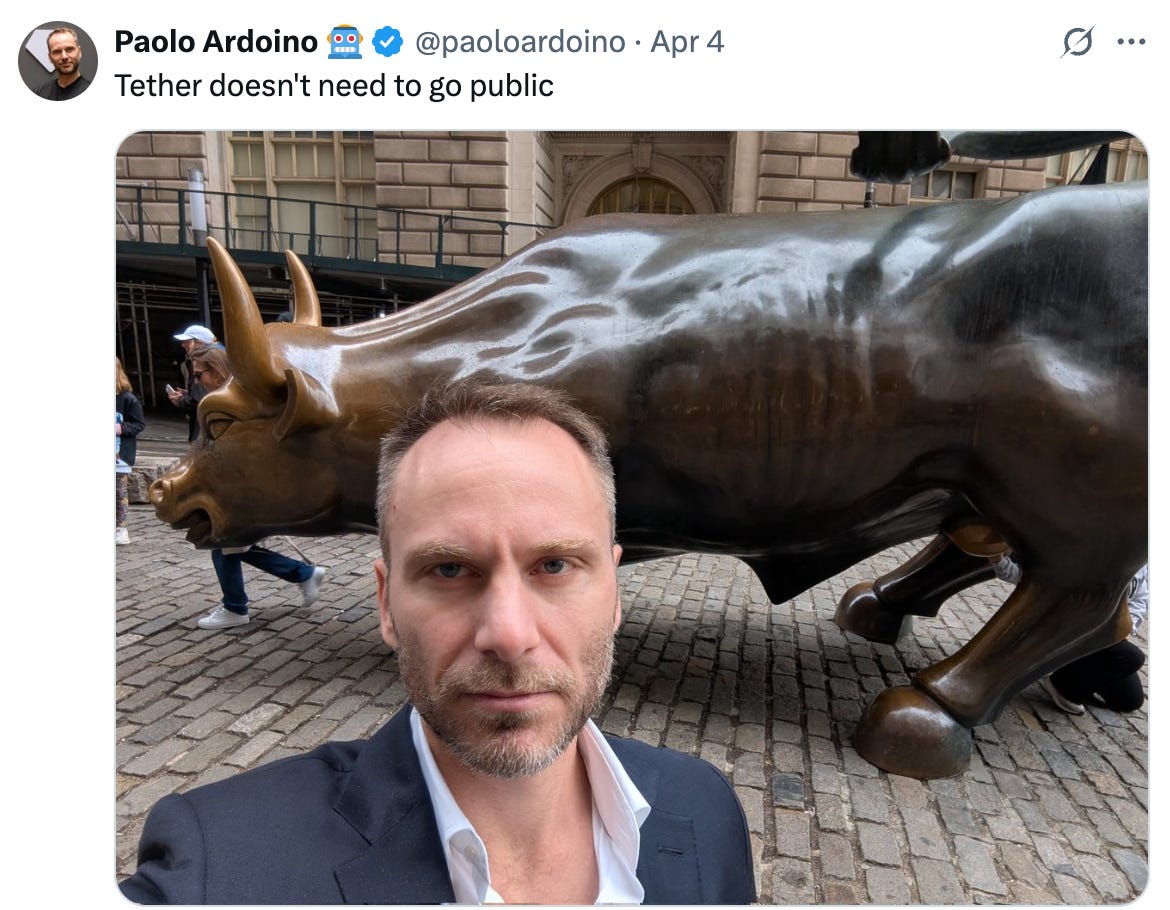On Why Circle's IPO Math Ain't Mathing
$263M in Salaries, 73 BTC on the Books: Circle Wants to IPO While Tether Prints Profits
Circle is getting ready for its second IPO attempt, and this time, they’re going big. Backed by JPMorgan and Citi, the company is aiming for a $5 billion valuation. As always, the headlines suggest confidence, but the financials tell a different story.
Behind flashy numbers and glazed glossy investor decks is a company grappling with compression on all sides: falling margins, shrinking market share, ballooning compensation, and weak crypto conviction.
And meanwhile, Tether, leaner, quieter, and infinitely more effective, is stacking sats, growing adoption, and not begging for public capital.
The Circle Math Doesn’t Add Up
Let’s start with what Circle disclosed:
$263 million in compensation in 2024
Gross margins dropping from 59% (2022) to 39% (2024)
Only 73 BTC on their balance sheet
USDC market share down by ~50% since 2022
Top-line revenue fed largely to Coinbase via distribution fees
That’s not a growth engine. That’s more like a company losing the stablecoin war while overpaying itself while losing it……..
Circle is betting that a yield-bearing stablecoin could turn the tide. But if they launch a “USDC with yield,” what’s stopping Tether from instantly countering with 3.3% and retaining dominance? With its lower cost structure and global momentum, Tether for the lack of a less disgusting word, is infinitely more agile.
Where’s the Crypto Conviction?
You’d think the second-largest stablecoin issuer would be loaded with digital assets. But nope; Circle holds just 73 BTC and under 2,000 ETH.
To put that in perspective: Rumble, a video platform, holds 188 BTC.
I am super surprised by this lack of exposure to be honest. Despite hundreds of millions in profit, Circle did almost nothing with the opportunity 2022 presented. It played safe, banked on strategic alliances, and paid fud campaigns while competitors built.
Distribution? More Like a Rug
Their partnership with Coinbase hasn’t brought them market share. Instead, it has just cost them more. The IPO docs make clear that Circle is paying a high price to keep USDC visible, and it’s not working.
They’d be better off breaking from that model and building a user base through product strength; not piggybacking off exchanges that don’t seem committed to helping them win.
The Yield Play and Tether’s Ace Card
All in all, they’re a corporate beast with a large and costly executive suite. The company’s compensation ballooned to $263 million last year, much of it sustaining a full orchestra of C-level titles. Hard to move like a startup when your headcount feels like a bank.
Circle seems to be moving toward a yield-bearing stablecoin, akin to stETH. The thesis? Offering interest to lure capital.
But there are two problems:
That only works if your competitor won’t match your rate
Tether already owns a huge part of the narrative and the rails
If USDC pays 3%, Tether can pay 3.3%. That’s a race Circle likely can’t win, no matter how MiCA-regulated they are.
While Circle is preparing a roadshow, Tether’s goated Paolo Ardoino posted a selfie with the Wall Street bull, captioned:
“Tether doesn’t need to go public.”
He's right. Tether is printing money, holding 100,000 BTC and then some, dominating emerging markets, and keeping regulators appeased with targeted address freezes. They don’t need investor capital; they’re becoming a sovereign-like issuer on their own terms.
If anything, Circle’s IPO exposes that they’re not winning.
Tether is operating on lower costs, deeper conviction, and stronger adoption. Circle is seeking validation through Wall Street, while Tether is building relevance across the Glob(e)al South.
In a war of outcomes, those C-suite execs better start delivering on their OKRs and justifying every line of those “high-ROI” KPI reports; fast. Because if adoption is the metric, Tether already won the decade.


